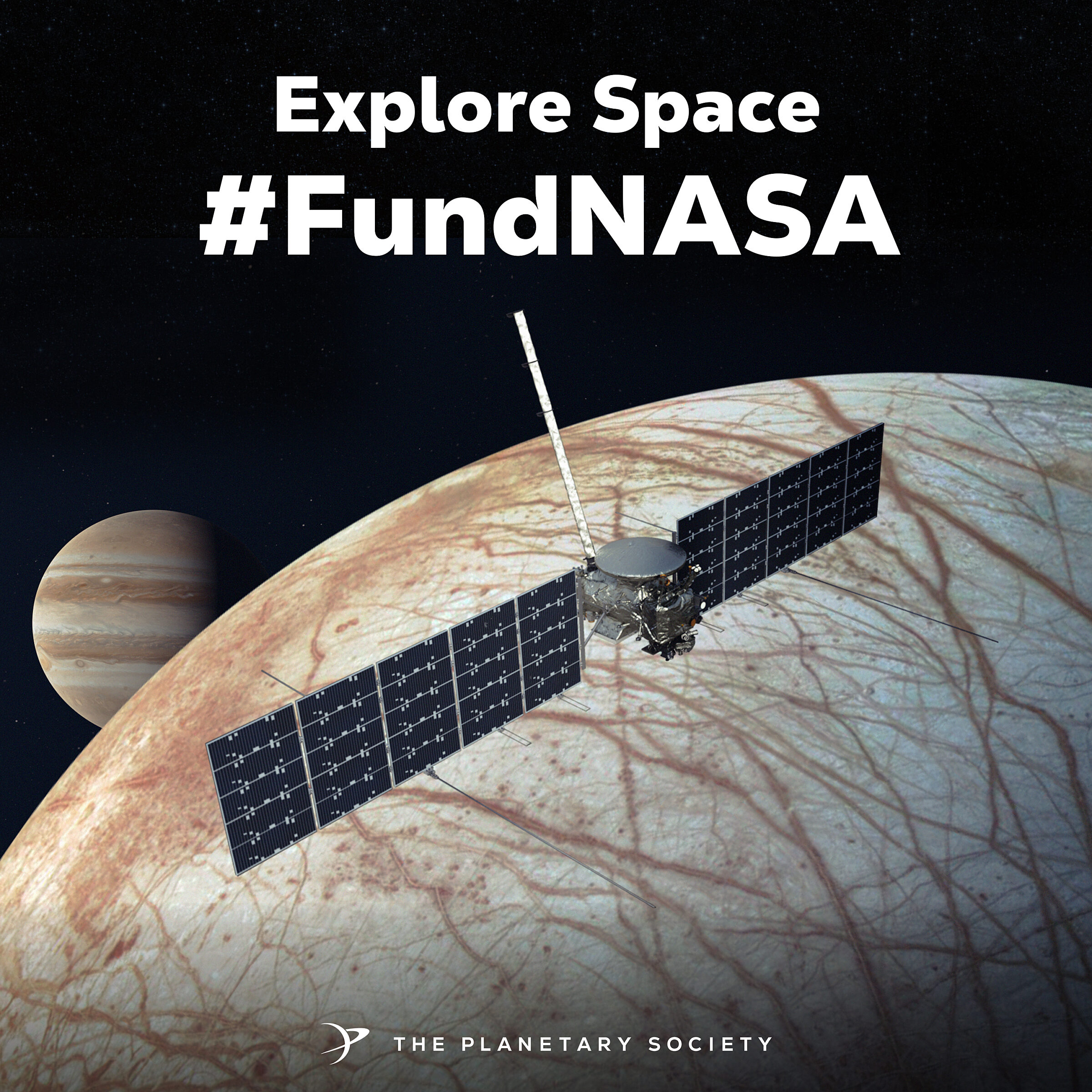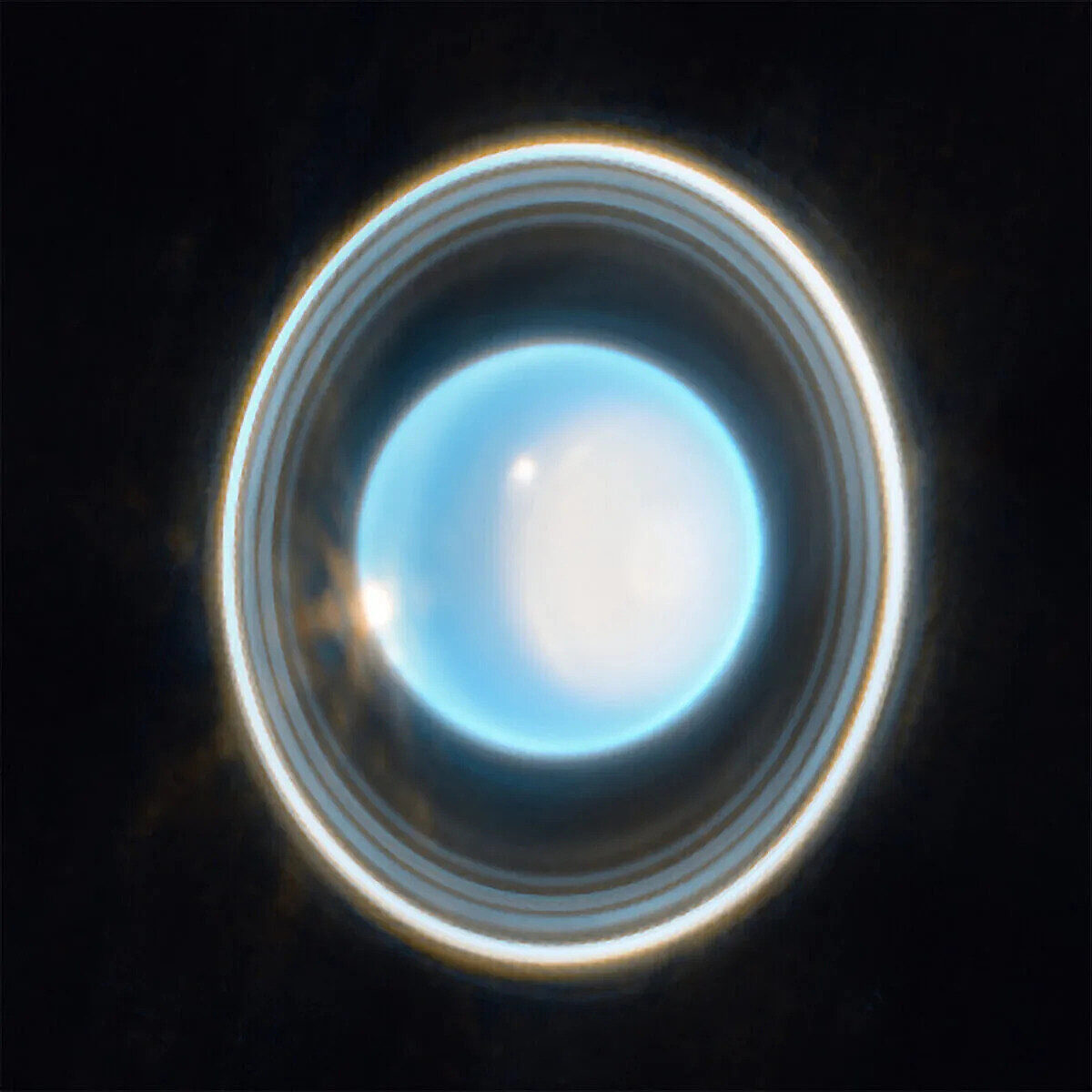The Downlink • Apr 14, 2023
Want more space? Speak up!
Space Snapshot

The Planetary Society’s Digital Day of Action is coming up on Tuesday, April 18. We’re asking space advocates around the world to help ensure that key NASA missions get the funding they need. If you're in the United States, tell Congress that you support a strong NASA budget. If you're outside the U.S., it’s valuable to help support NASA’s science and exploration programs since they so often involve extensive international collaborations, enabling other spacefaring nations to do more than they could alone. Wherever you live, you can help spread the word about our Digital Day of Action and the importance of space exploration.
Fact Worth Sharing

Our Digital Day of Action's goal is for 1,000 space advocates to contact Congress in support of NASA. Go to planetary.org/action2023 to save the VERITAS mission to Venus, get NEO Surveyor to the launch pad, and ensure the future of space exploration at NASA.
Mission Briefings


The largest, most detailed global map of Mars ever created is now available to the public. Stitching together 110,000 individual images taken over six years by the Mars Reconnaissance Orbiter, scientists at Caltech created a 5.7-terapixel map that can be zoomed in to a resolution of five meters (16 feet) per pixel. Pictured: A zoomed-out view on the left showing Valle Marineris (circled), shown up close on the right. Image credit: NASA/JPL-Caltech/MSSS.

NASA has funded its latest batch of far-out ideas. The Innovative Advanced Concepts program funds futuristic projects that may have the potential to revolutionize space exploration. This year’s winning projects include a quantum radar system for remote sensing, a plan to pulverize incoming asteroids, an extremely high-speed propulsion system driven by radioactivity, and more.

SpaceX says their Starship vehicle is ready to fly. The new spaceship, which SpaceX hopes will someday carry astronauts to Mars, now awaits the Federal Aviation Administration’s approval for its first uncrewed test launch. With the combination of the Super Heavy rocket first stage and the Starship upper stage, this would be the largest and most powerful rocket ever launched.
From The Planetary Society


If you dream of standing on another planet, avoid the nightmarish surface of Venus. The planet next door used to be a lot like Earth, and if you somehow found yourself there back then you’d enjoy moderate temperatures and views of liquid water oceans. Today, the planet is much less hospitable — standing on the surface of Venus would quickly kill you in very unpleasant ways. Learn more about why robotic emissaries are our best bet for exploring this harsh but fascinating world. Pictured: An image of Venus's surface created by combining data from the Pioneer, Venera, and Magellan missions. Image credit: NASA.

What happens behind the scenes when Congress funds NASA? The latest episode of Planetary Radio: Space Policy Edition features a conversation with Jean Toal Eisen, a former senior staffer on the Senate Appropriations Committee who drafted legislation directing billions of dollars to NASA. She unpacks how decisions and priorities are made behind closed doors, and the motivations and drivers of the people who make them. Want to ensure that your voice is heard behind those closed doors? The Planetary Society’s space policy and advocacy program educates lawmakers about space exploration and important missions, connects our members with their representatives at key decision-making moments, and makes sure space is always part of the conversation. Do your part to support this crucial program.

Tune into one of the world’s biggest space parties. Last week, Planetary Radio host Sarah Al-Ahmed brought her mic to Yuri’s Night in Los Angeles, an annual celebration of all things space. Hear her interviews with Star Trek cast members, JPL Director Laurie Leshin, astronaut Jessica Watkins, and more.
What's Up

Venus shines very bright in the western evening sky, with Mercury low to the horizon below it. Higher up in the evening sky look for reddish Mars, growing dimmer as it moves away from Earth. In the pre-dawn, look for yellowish Saturn in the east. And it’s not too early to start planning to find a dark site for viewing the Lyrid meteor shower, which peaks between April 21 and 23. Find out what else to look for in April’s night skies.
Wow of the Week

Who knew Uranus had such gorgeous rings? This beautiful image from JWST shows the planet’s ring system like never before thanks to the space telescope’s unparalleled imaging technology. Time after time, JWST is making the world say, “Wow!” Image credit: NASA/ESA/CSA/STScI/J. DePasquale (STScI).
Send us your artwork!
We love to feature space artwork in the Downlink. If you create any kind of space-related art, we invite you to send it to us by replying to any Downlink email or writing to [email protected]. Please let us know in your email if you’re a Planetary Society member!


 Explore Worlds
Explore Worlds Find Life
Find Life Defend Earth
Defend Earth

